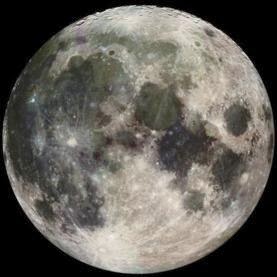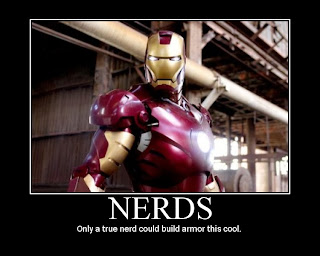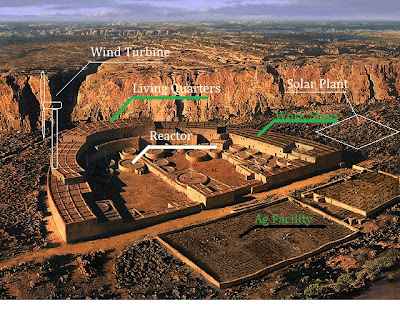Alita and the surviving crew took refuge in a cave after she landed the pod. Of course it was a rough landing and Alita could only breathe relief that no more crew members perished. She scurried from the cave when darkness fell. She knew she was taking an enormous risk returning to the pod. But she needed its communication equipment…what she could salvage of it at least.
She ran through a forest of rock outcroppings, halting every twenty yards or so to survey her surroundings, wary of Hooper’s search parties. The pod lay up ahead, resting in a clearing, tilted at a severely lopsided angle. When she saw no criminals in sight, she moved in, her rifle in firing position, sweeping right to left.
“Don’t be alarmed.”
The voice came from behind her. Alita didn’t panic as military training and battle honed reflexes kicked in. She dropped and twisted, swinging her weapon about in a full 360 until she had it pointed at… “Dern!”
“You realize, I would have disarmed and incapacitated you in less than two seconds,” the armored man boasted with amusement in his voice.
“You realize I can still shoot you for sneaking up on me,” Alita replied peevishly, before breaking into a smile. She lowered the weapon, looking Dern up and down. “How are you? Fully charged?”
“Fully, but not up to full capacity.” Dern pointed to the pod. “I take it you’re going for the comm.”
Alita nodded. “That’s the plan. With no goons around, it should be no problem.”
“Lead the way,” Dern said. “I’ll cover.”
The pair made a short dash for the pod.
Alita squeezed through an entry hatch that was partially closed due to damage from the landing.
Dern followed, forcing the hatch door fully open by way of his suit’s strength enhancer.
Alita went to the console and set her rifle on the floor. “Instruments got banged up a bit. I tried sending a distress after we landed. It didn’t go through.” She pried off a panel and proceeded to dismantle the communicator.
“Wait,” said Dern, reaching down and placing an armored hand over a latticework of exposed circuitry. “The hardware might need a boost.” His hand glowed briefly, initiating a similar response from the console. He stepped back. “Give it a try.”
Alita toggled a sequence of switches and threw an approving glance Dern’s way. “Comm is up. You saved me some repair time. I just sent a distress. While I’m at it, I’m going to scan for patrol ships.”
After a moment, the comm emitted a low variable hum.
“That sounds like a contact,” Dern remarked hopefully.
Alita raised a brow. “It’s something. I’m trying to clear away static. The contact registers at the periphery of this comm’s transmission range…damn. It’s gone.” She drew up in alarm. “The distress transmittal is gone, too! I think we’re being jammed.”
“The comm’s activation must have triggered an alert in Hooper’s camp,” said Dern. “If they have comm detection gear, then this pod has already been pinpointed. We have to go.”
“I’ll shut it down. I might be able to modify it enough to mask an outgoing signal…”
“There’s no time for that,” Dern insisted. “Come on!”
Dern rushed to the pod exit, with Alita close behind.
They practically leapt through the hatch. Dern grabbed the woman’s arm and accelerated several dozen feet across open ground.
A sleek arrow shaped object shrieked from the sky punching through the pod’s hull seconds after they vacated it. The next instant a hellish flash turned the pod into flaming wreckage.
Shockwaves rippled forcefully from the blast, swatting Dern and Alita to the ground.
A gray, bloated craft glided overhead.
Dern recognized the craft as being a Scythe, a close air support vehicle.
The present version descending into the canyon was definitely antiquated; probably well over a century old. But its ordnance was undoubtedly recent.
Dern’s enhanced vision zoomed in on the craft, spotting its bottom-mounted launcher loading a fresh missile. The launcher swiveled toward him.
Dern raised his arm, triggering a blast of plasma from his bracelet. The beam traced a scorching path skyward, striking the Scythe in its nose section before it could release its missile. The Scythe’s front end vanished. The rest of it spiraled into the canyon, wrapped in a fiery blanket where it collided next to the pod’s mangled remains.
“Let’s go!” Dern hustled Alita to her feet. “Where’s your hideout?”
Alita pointed to her right and led the way through a thick, mazelike cluster of towering rock outcroppings.
From inside his command TVV, Hooper pounded a fist on his knee in frustration after witnessing the Scythe’s destruction on one of the vehicle’s live monitors. He had paid a pretty penny to establish some degree of air power on this benighted planet. Former Coalition combat aircraft were certainly not easy to come by. No way he was sending his remaining four Scythes into that kill zone. Not yet at least. He hopped out of the TVV and called over his top officer, a rangy, Mohawked tough named Vlados. “Looks like they’re heading south. Send down a tracker, source their general location then hit ‘em with Shatter Busters.”
Vlados’s lips creased open, revealing an unsavory gap toothed grin. “Gladly, sir.”
Tunnal, idling nearby, approached the settlement leader. “I’d like to think Shatter Busters’ll do the job, especially when it comes to Lowtower. But I won’t be convinced until we pull his cold carcass from the rubble.”
“Fine,” Hooper said tersely, rubbing sweat from his forehead with the back of his forearm. “You can have that opportunity when you lead the search party to recover his body.”
Tunnal smiled.





.jpg)





